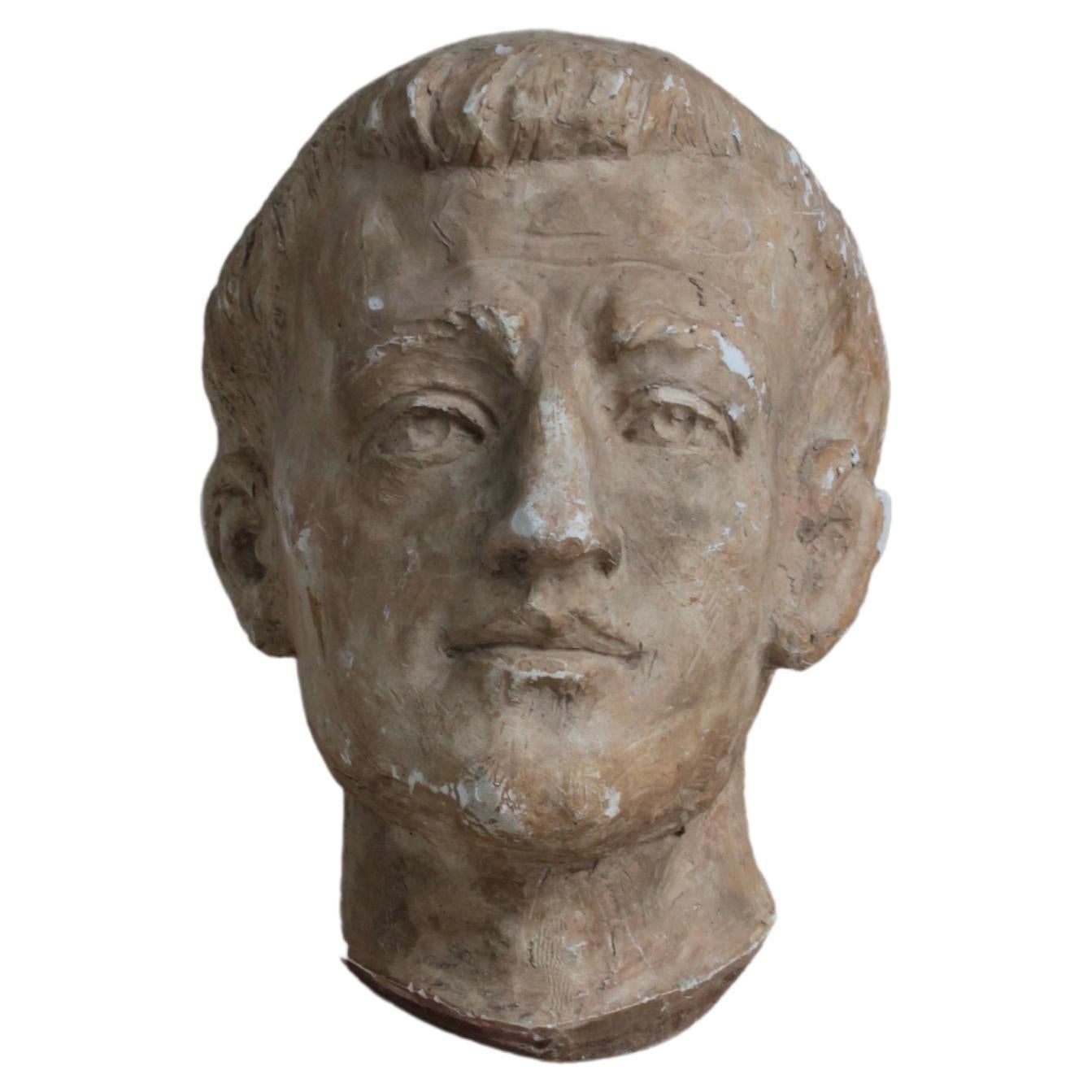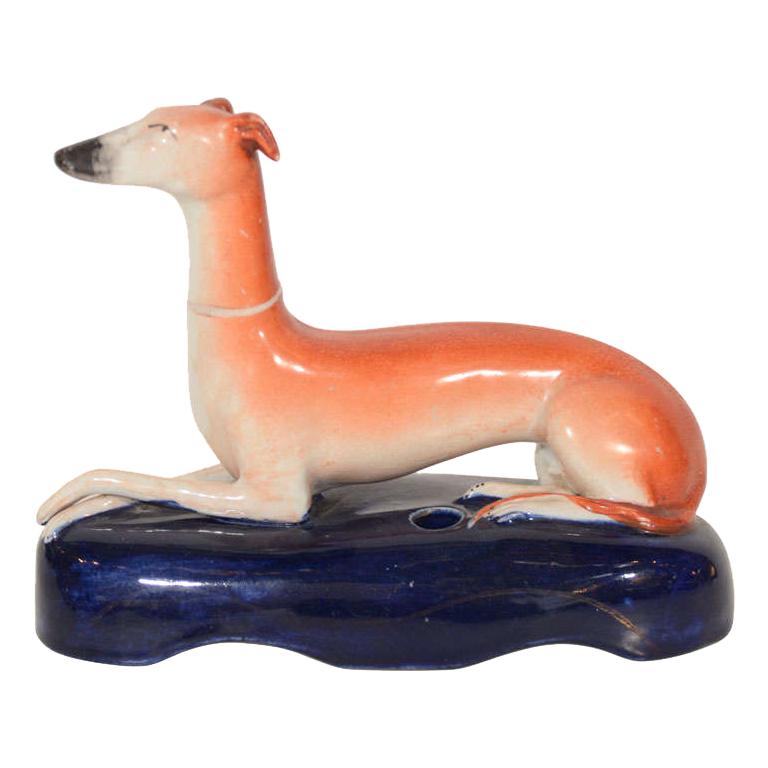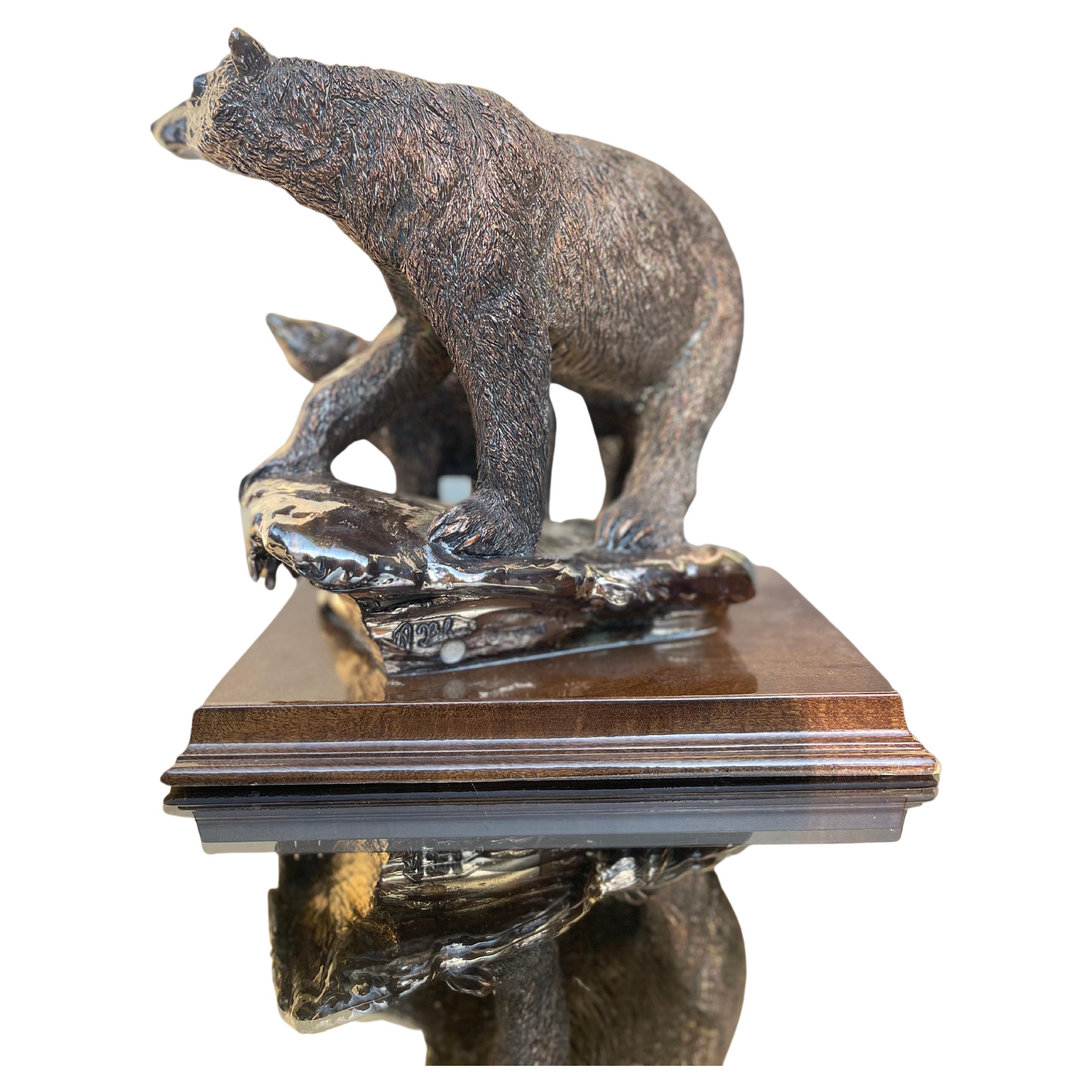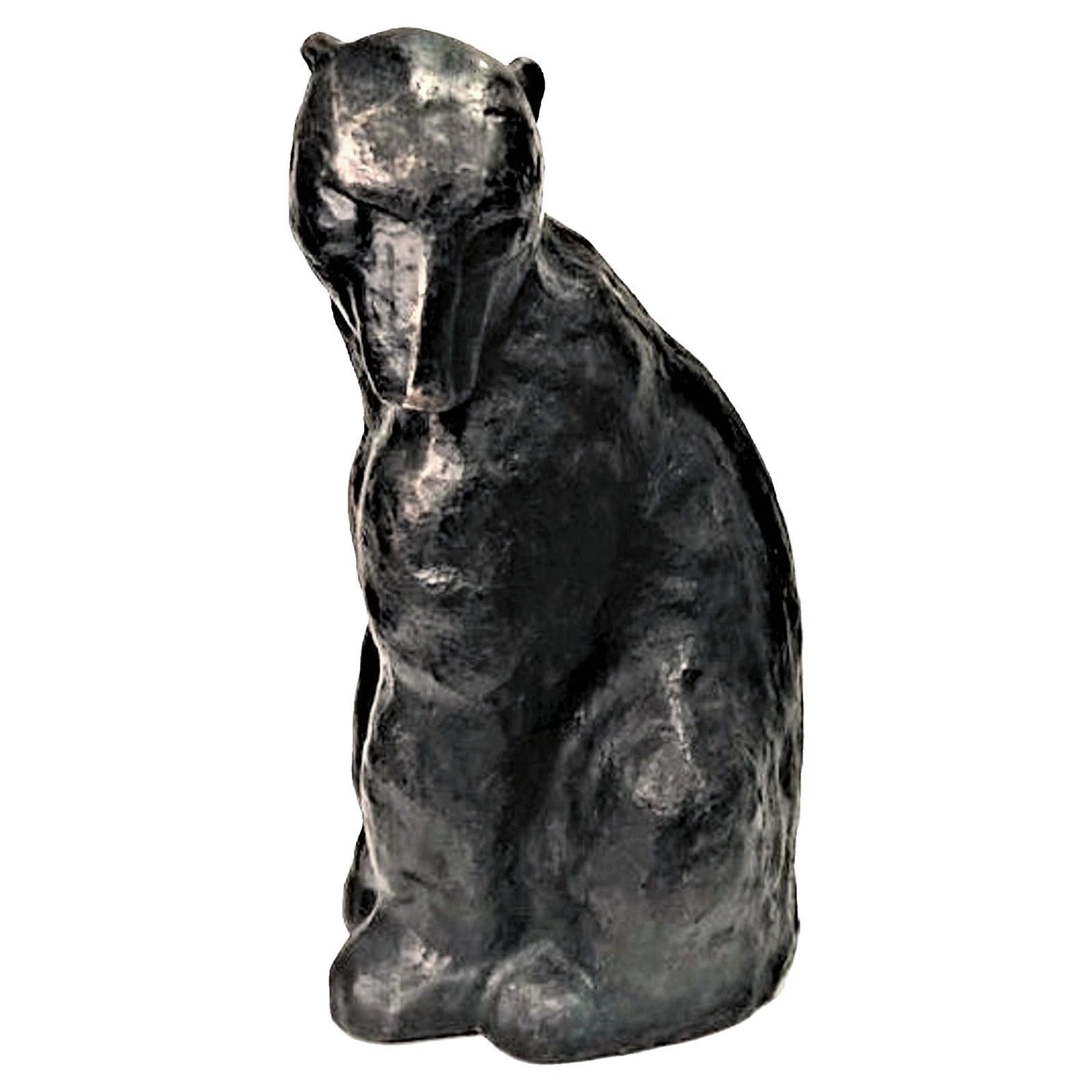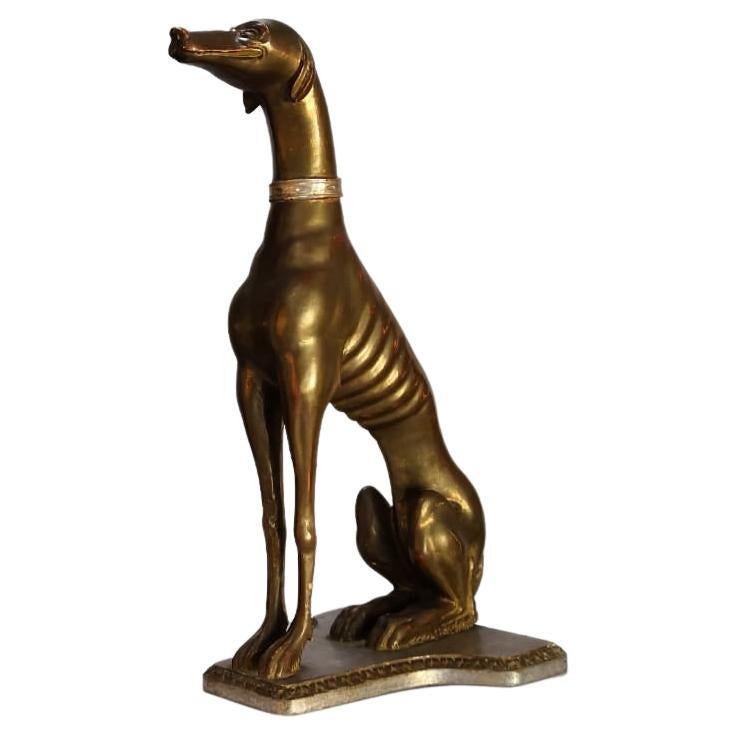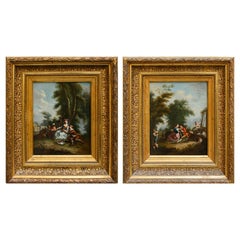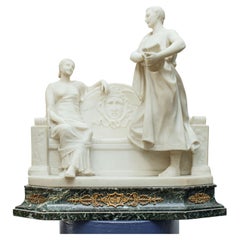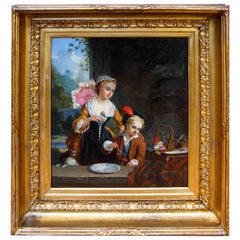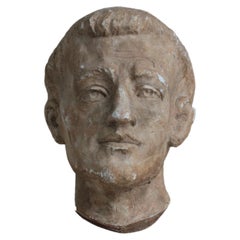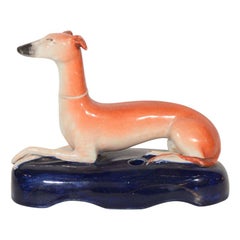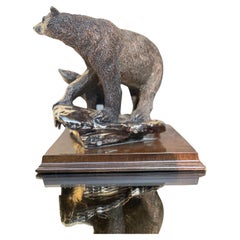Items Similar to French school, early sec. XX, Greyhounds
Want more images or videos?
Request additional images or videos from the seller
1 of 9
French school, early sec. XX, Greyhounds
About the Item
French school, early sec. XX
Greyhounds
Bronze, 14 x 19 x 11 cm
- Dimensions:Height: 4.34 in (11 cm)Width: 7.49 in (19 cm)Depth: 5.52 in (14 cm)
- Style:Other (Of the Period)
- Materials and Techniques:
- Place of Origin:
- Period:
- Date of Manufacture:XXth Century
- Condition:Wear consistent with age and use.
- Seller Location:Milan, IT
- Reference Number:1stDibs: LU5918245119632
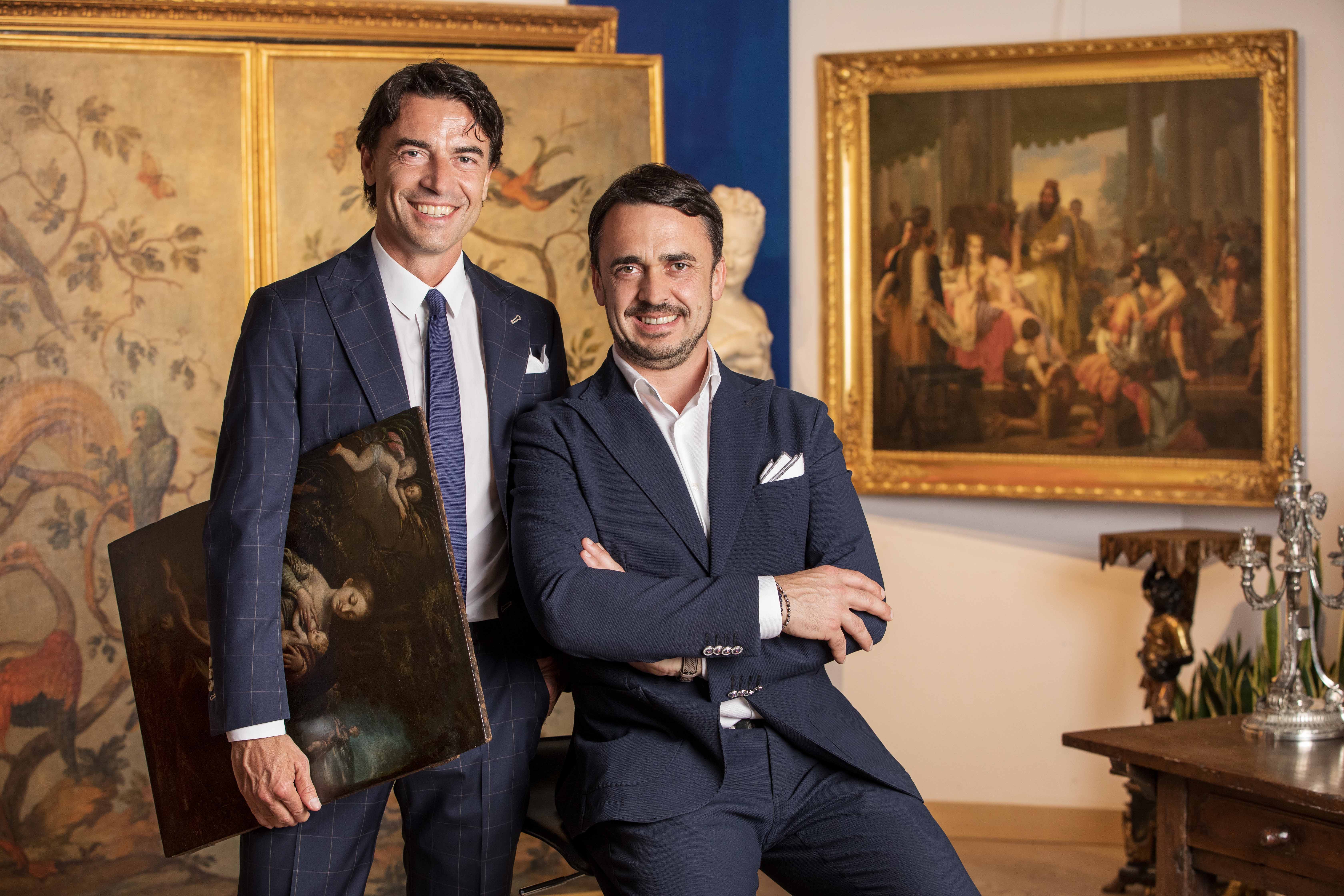
About the Seller
5.0
Vetted Professional Seller
Every seller passes strict standards for authenticity and reliability
Established in 2000
1stDibs seller since 2021
30 sales on 1stDibs
Typical response time: 21 hours
- ShippingRetrieving quote...Shipping from: Milan, Italy
- Return Policy
Authenticity Guarantee
In the unlikely event there’s an issue with an item’s authenticity, contact us within 1 year for a full refund. DetailsMoney-Back Guarantee
If your item is not as described, is damaged in transit, or does not arrive, contact us within 7 days for a full refund. Details24-Hour Cancellation
You have a 24-hour grace period in which to reconsider your purchase, with no questions asked.Vetted Professional Sellers
Our world-class sellers must adhere to strict standards for service and quality, maintaining the integrity of our listings.Price-Match Guarantee
If you find that a seller listed the same item for a lower price elsewhere, we’ll match it.Trusted Global Delivery
Our best-in-class carrier network provides specialized shipping options worldwide, including custom delivery.More From This Seller
View All18th century, French School, Gallant scenes
Located in Milan, IT
18th century, French School
Gallant Scenes
(2) Oil on panel, 24 x 19 cm
Framed, 44 x 36 cm
This pair of works attributable to the artistic context of the French eighteenth centu...
Category
Antique 18th Century and Earlier Italian Other Paintings
Materials
Wood
Early 20th Century Gallant Scene with Citadel White and Green Marble Sculpture
Located in Milan, IT
Early 20th century
Gallant scene with citadel
White marble and green marble from the Alps, cm 59 x 48 x 29
Signed on the back "G. Abell"
The refined marble group describes the...
Category
Early 20th Century Italian Figurative Sculptures
Materials
Marble
18th-19th century, French school, the soap bubbles
Located in Milan, IT
French school, 18th-19th century
The soap bubbles
Oil on panel, 44.5 x 36.5 cm
Framed, 60 x 54 cm
In this French school painting, with its leery and playful tone, but mother lovi...
Category
Antique 19th Century Other Paintings
Materials
Canvas
15th century, Florence, Madonna and Child
Located in Milan, IT
15th century, Florence
Madonna and Child
Painted stucco, 29 x 14 cm
This stucco Madonna of the 15th-century Florentine school exudes a gentleness and sacredness that is entirely c...
Category
Antique 15th Century and Earlier Italian Other Figurative Sculptures
Materials
Stucco
Early 17th Century Roman School Praying Madonna Painting Oil on Canvas
Located in Milan, IT
Roman school, late 16th-early 17th century Praying Madonna
Oil on canvas, 81 x 69 cm
Frame 83 x 95.5 cm
A divine whiteness reverberates with vibrant luster on the maphorion of the present Virgin. The palpable iridescence that structures the thin rosaceous garment, woven with the same fresh light, produces a slight rustle when she takes her hands off. The Madonna in fact takes a prayerful pose, opening her palms to underline her fervent ecstatic intention; the white neck is rendered with perishable fullness of pigments, like the hands, perfectly alive, and the very shiny eyes. With fine shrewdness the artist of the present styles the Virgin's hair with thin white ribbons, exacerbating the purity. An evocative light falls gently on the bust, a materialized sign of divine glory.
The present can be traced back to the late Mannerist climate that prevailed in the capital after the emanation of the Tridentine council (1545-1563). The late Mannerist licenses that can still be seen there, such as the intense lyricism in the stylistic code adopted by the artist, are innervated in the new basic catechetical intent, which at the end of the century produced a certain figurative rigorism. The present, however, still responds to that extraordinary Roman dynamism that raised the capital to a bulwark for the entire mannerist lesson, matched only by a second artistic center, the Florentine one. The engaging carriage of the Virgin reflects the contemporary examples of Giuseppe Valeriano (1542-1596), a Jesuit painter, returning in the Marriage of the Virgin of the Roman Church of Jesus, as well as in the Madonna of Sorrows in the Recanati Altarpiece, equal ardor. But it is in the Assumption of the Virgin painted in four hands with Scipione Pulzone...
Category
Antique Early 17th Century Italian Paintings
Materials
Canvas
Neapolitan school, 17th century, battle scenes
Located in Milan, IT
Neapolitan School of the 17th Century
Battle scenes between Christians and Turks
(2) Oil on canvas, 52 x 71 cm
Framed, 61 x 80 cm
One genre that met with wide acclaim in seventeenth-century Neapolitan painting and flattering success among collectors was that of battle. The Parthenopean nobility loved to adorn the walls of their salons with battles depicting single acts of heroism or complex combats that exalted patriotism and warlike prowess, virtues with which members of the wealthy aristocracy of the time liked to identify.
The Church, in the Neapolitan area, was also at the forefront of commissions, commissioning artists to depict the spectacular triumphs of Christendom over the infidels, such as the memorable naval battle of Lepanto in 1571, which marked a historical turning point with the great victory over the Turks, becoming a repeated iconographic motif imbued with devotional value, replicated several times through the interest of the Dominican order, which was very devoted to Our Lady of the Rosary, who benevolently followed earthly events from above in heaven. Other themes dear to the Church within the genre were drawn from the Old and New Testaments, such as Constantine's Victory at the Milvian Bridge or St. James at the Battle of Clodius.
Among the leading Neapolitan artists of that period, several specialized in battle scenes: these include Francesco Graziani, known as Ciccio Napoletano, a battler active between Naples and Rome in the second half of the 17th century; Andrea De Lione, who lived in Naples from 1610 to 1685, a versatile narrator of battles without heroes, of horsemen assaulting or retreating, and of profane scenes immersed in a wild and primordial, yet already classicized, nature; and Carlo Coppola. The latter was active for more than twenty years, from 1640 to 1665, and his catalog, which is interesting because it bears witness to a particular historical moment and the tastes of private patrons, has yet to be defined, although many of his works are initialed. It is precisely to Coppola's corpus that these two paintings could come close: with the production of the Neapolitan battler the two paintings seem to share the smoky colors, the accentuated chiaroscuro and the marked dynamism of the scenes. Moreover, it is necessary to mention how that of the battle between Christians and Turks was an absolutely central theme in Coppola's pictorial production. Also close to the manner of the two paintings analyzed here is the production of one of Coppola's most celebrated pupils, Giovanni Luigi Rocco...
Category
Antique 17th Century Italian Other Paintings
Materials
Canvas
$9,016 / set
You May Also Like
Study of Male Head in Patinated Plaster, Portugal Sec. xx
Located in Lisboa, PT
A male head study from the twentieth-century, in patinated plaster, possibly depicting a head of a friar, or a Saint.
Patinated plaster sculpture is a process in which plaster is ap...
Category
20th Century Portuguese Schoolhouse Figurative Sculptures
Materials
Plaster
Scultura Astratta, Sec Meta xx Secolo, Vetro Sommerso Viola Artista Ignoto
Located in Milano, MI
scultura astratta - sec meta xx secolo - vetro sommerso viola artista ignoto.
Descrizione :
bellissima scultura astratta in vetro di murano...
Category
Mid-20th Century Italian Abstract Sculptures
Materials
Glass
Early Staffordshire Greyhound Inkwell
Located in New York, NY
Early and original inkwell or quill pen holder in the form of a seated greyhound by Staffordshire. England, circa 1860.
Features a finely execu...
Category
Antique 19th Century English Inkwells
Materials
Pottery
Scultura in Resina Bagnata in Argento, Firmato Sulla Base, Seconda Meta xx Sec
Located in Milano, MI
scultura in resina bagnata in argento - firmato sulla base - seconda meta xx sec
scultura in resina bagnata in argento - firmato sulla base - seconda meta xx sec
Descrizione ...
Category
Mid-20th Century Italian Animal Sculptures
Materials
Silver
French Antique Bronze Sculpture of She-Bear, Early XX Century
Located in New York, NY
This exquisite French animalistic bronze sculpture from the early twentieth century is beautiful in every way - its artistic expressiveness, as well as the highest-level rendition, h...
Category
Early 20th Century French Art Nouveau Animal Sculptures
Materials
Bronze
Greyhound Sculpture Dog in Carved and Gilded Wood, Italy, pp S.XX
Located in Benalmadena, ES
Spectacular Greyhound from the beginning of the 20th century, carved in wood with golden patina and stamped on the made in Italy base.
Condition: Good condition in general, to hig...
Category
Early 20th Century Italian Art Deco Animal Sculptures
Materials
Wood
$1,849 Sale Price
20% Off
